For this edition of 5 Q’s, we asked local artist, activist, storyteller, and pencil enthusiast (among so much more), Felicia T Perez, to take a stab at five questions for local artist and educator Candace Nicol Garlock, who recently had a piece on view as part of Holland Project’s Billboard Gallery. They discuss making work responding to living with chronic illness, daily art practices, and art for birds. Enjoy!

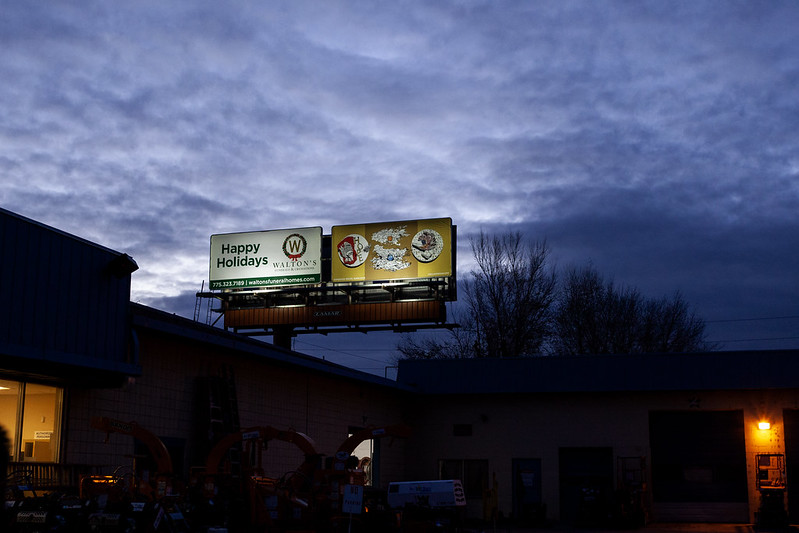
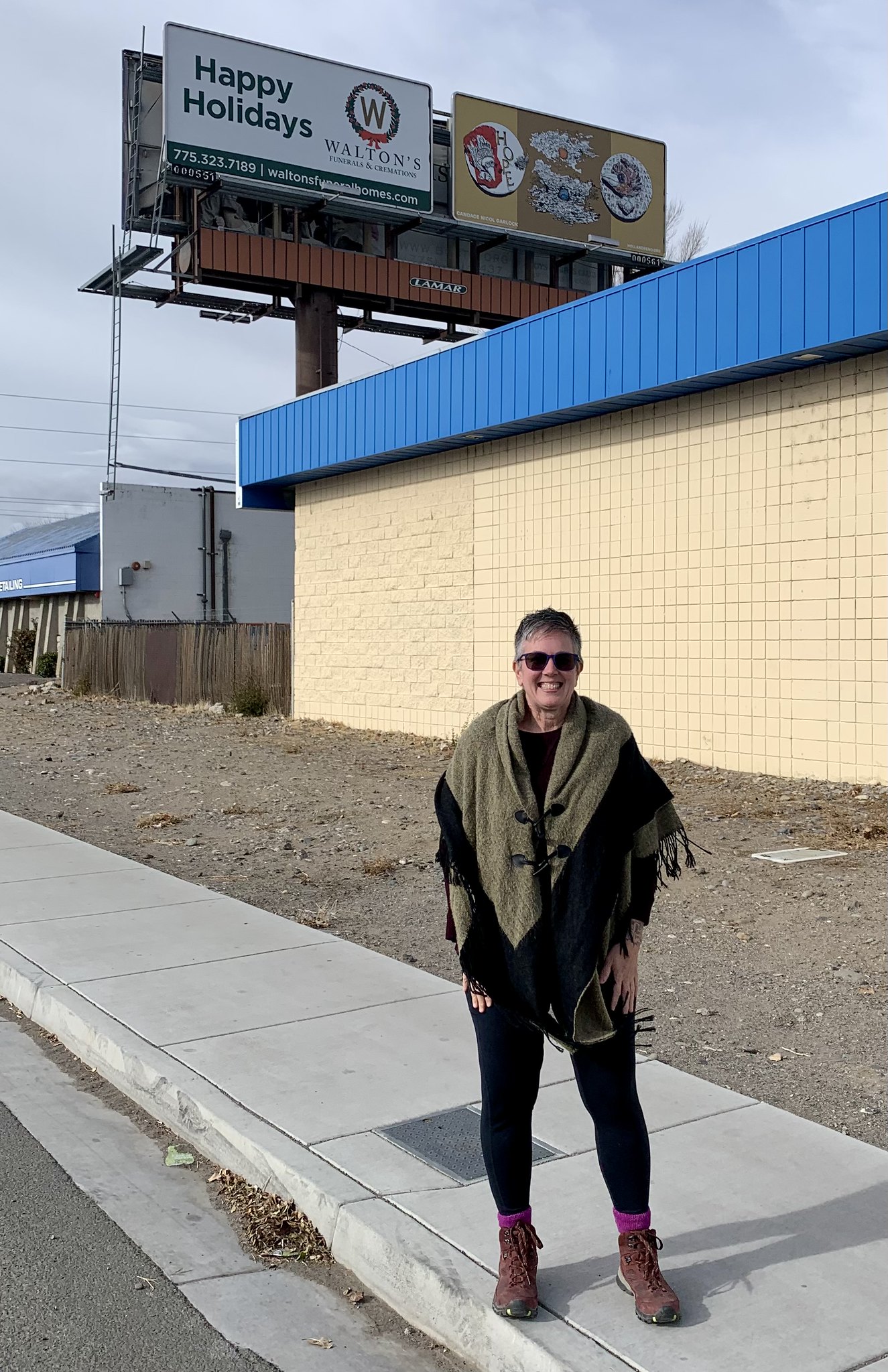
Felicia T Perez, 1. Several world-famous artists (like most of us people) developed or were born with a variety of chronic illnesses and/or disabilities – Michelangelo, Francisco Goya, Van Gogh, Henri Matisse and more). For many, their changing bodies made their art more dramatic and imaginative. You publicly talk about being diagnosed with multiple sclerosis in 2011. How has living with MS influenced your art and creative practice? What is their relationship to one another?
Candace Nicol Garlock: I immediately think of Frida Kahlo. Her work is so honest, open, and brave. Perhaps I appreciate her now more that I am older and have experienced a lot of chronic pain. Besides that, I grew up in a household that valued secrets. My grandma’s generation would have been abhorred at the thought of me creating art about my illness. Well, to be honest, many older family members were upset about my artwork even in my early years as an artist. I have always pushed boundaries a bit since the early 1990s. The questions I’ve raised and the themes that I have explored invariably have traveled down the path of revealing secrets, taboos, and the complexities of relationships, so it wasn’t hard for me to open up about having MS.
Living with MS…it’s there in the background all the time. I try to respect it and balance making art, spending time with family, and working with lots of rest. It does limit my productive time and I do not produce the amount of artwork that I did before MS. I think the public acknowledgment of it has empowered me. I am such a strong advocate for openness about our illnesses and struggles.
FTP, 2. Which of your art pieces best speaks to your life and POV before your MS diagnosis? And which, to date, shares best what your POV is today?
CNG: I’m thinking the one art piece “before MS” that did not get put away or stored in a crate is Omar. This was the last large-scale male nude that I had done in 2011, right before my first MS attack. When I look back at my sketchbooks at the time, many more nudes needed to be developed and I was still working through what masculine beauty is. The theory of the female gaze was a provocative motivating factor and I still wonder what I would have done if I was able to continue with this trajectory, where would the male nudes be today?
Although the figure is still present in my work, the focus has changed from constructing the male nude to interpreting chronic illness and its effects on the body. Probably the piece that resonates the most for me is Body/Body: Flower.
Both still illustrate my fascination with beauty and ornamentation, but the message has changed. The body in both is cut up and reconstructed, so I guess that schema in my art hasn’t changed.
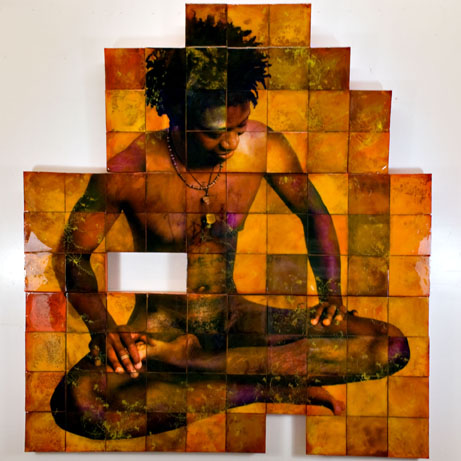
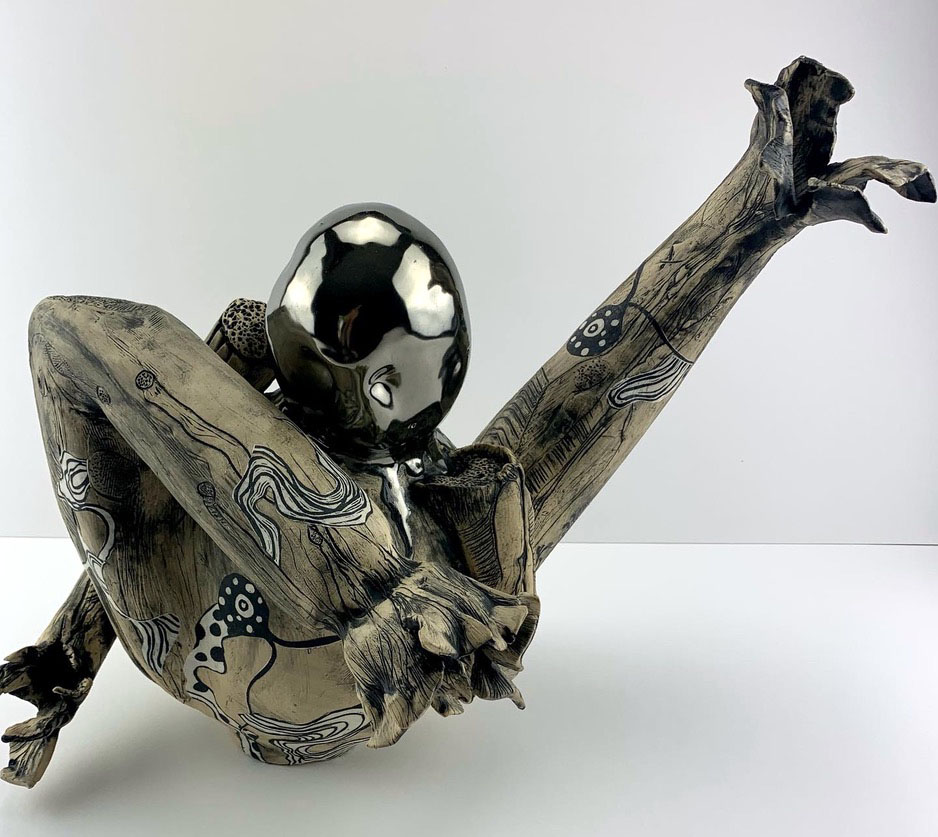
FTP, 3. In explaining the work behind your “Daily Nodes” you write, “The daily illustrations and writings are a part of the healing process, both physically and mentally.” Can you explain more about how your art practice helps you to heal?
CNG: I think here, I have to refer to my art journals which was a practice that I really embraced in 2012. I mean, I’ve always had a sketchbook but it was separated from my every day, my family, my work, etc. At the time, my neurologist was helping me come up with strategies to work through the attack. She mentioned journaling to help with memory. I immediately became obsessed with it, combining my writing and art into the art journal. I began to learn how to make art journal books and then started teaching how to make them in my classes at TMCC. The art journals were also memory books that infused my family life with my art. The two became one and I couldn’t separate any of it.
When I had my second attack this year, one of the skills I lost was my drawing ability. It’s a little humorous at this moment, thinking about my priorities. I had to practice walking again and speaking. Of course, thinking was a problem, and I was fighting fatigue, but what I was the most concerned about was my inability to draw. One night in June, I just began to draw for an hour using ink pens, and then the next morning I would take a picture of the drawing and color the drawing in Photoshop. I was getting my Photoshop skills back, too. I then wrote about the drawing. At first, the Daily Nodes were an exercise, but as I continued, I realized that what I was experiencing was more than just about physical healing, it was also a mental journey towards that part of healing that is so hard for us all. The healing of the mind and soul. I’ve been super lucky in that I started with an amazing neurologist who also saw me as a whole person. Here is one of the last nodes done (image attached) that was an homage to her.
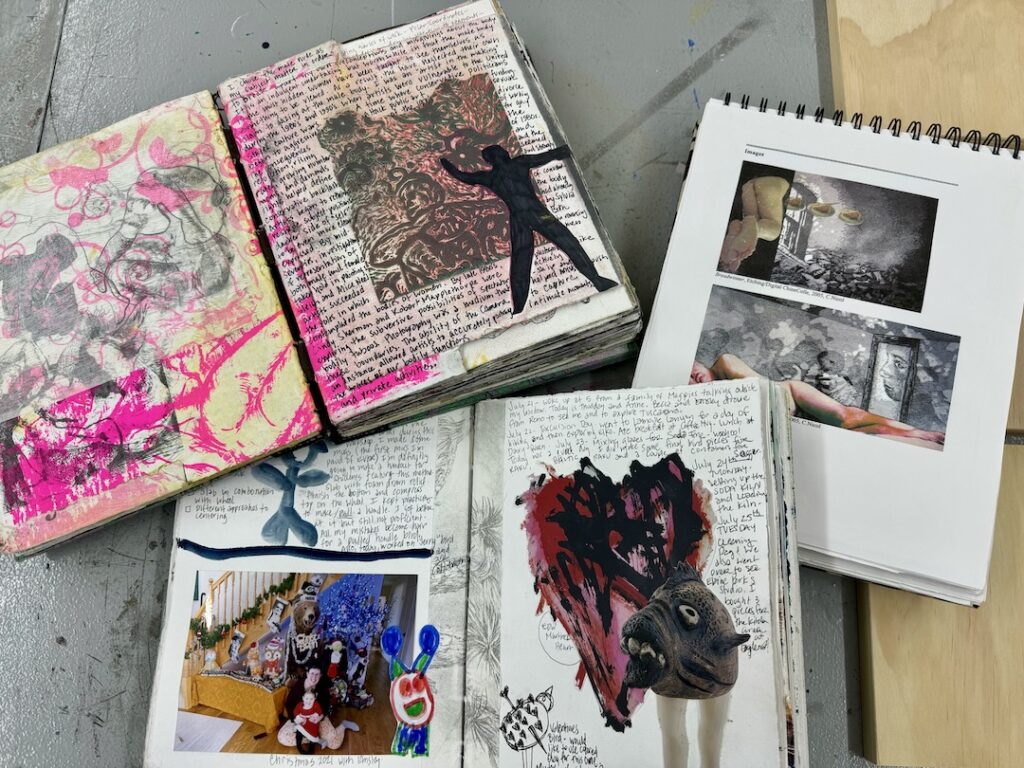


FTP, 4. What was it about the HP Billboard series that made you want to participate? Have you ever worked with that size and scale before?
CNG: Honestly, I was a bit surprised to be invited to create art for a billboard. I was already working on the Daily Nodes series, so I combined three of the nodes for this billboard design. I’ve made large pieces and installations before, but never a billboard design.
FTP, 5. I really enjoyed learning more about your Fashionistas and “For the Birds” Series and how it started during the Pandemic – “watching a cascade of different types of birds vying for their spot at the bird feeder.” Now, I’d like to imagine that you have been invited to create a new billboard but this time for birds! The billboard locations and sizes will be updated to match the audience’s needs. What would your billboard idea be and look like? And where do you think this billboard should be placed?
CNG: I’m working on a new series of paintings for a pollinator-themed show out in Fallon next fall, so the birds would be a pretty cool idea as a billboard along a highway. I can imagine how fun it would be to drive along and see these fashionistas just hanging out on a billboard. Honestly, any unexpected place would be perfect. The fashionistas are playful and bring a spark of hope with them. Hope is an important ingredient in the healing process.
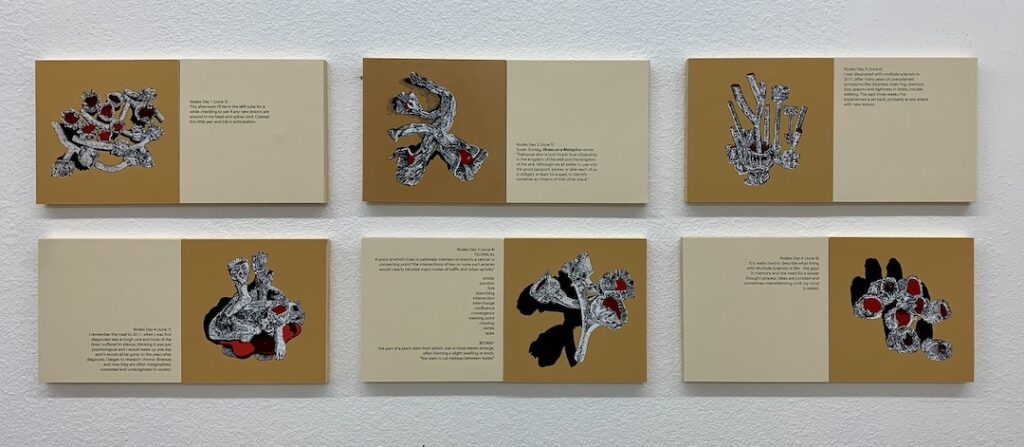
About Felicia T Perez: Born and raised in Southern California, Felicia T Perez is a storyteller at heart. From being an educator, author, public speaker, and audio storytelling producer, Felicia uses stories to change larger narratives that are harmful. She most recently produced the “Health and Climate Solutions Oral Storytelling Project,” they hosted and created the “Been There, Done That: Pandemic Podcast,” and in 2020 she was a Lecturer at the University of Nevada Reno in the Gender, Race and Identity Department.
About Candace Nicol Garlock: Reno, Nevada-based artist Candace Nicol Garlock is an interdisciplinary artist and arts educator at Truckee Meadows Community College. She is a member of Southern Graphics Council International and is a board member for Rocky Mountain Print. A renowned printmaker whose work has been shown nationally and internationally, she has received multiple awards including the Reno Tahoe Artist Best in Sculpture/3-D Artworks in 2022 and Best of Show and Best in 2D Mixed Media in 2023, the Nevada Arts Council Artist Fellowship in 2009 and an honorable mention in Printmaking Today, a review of fine art printmaking in Abruzzo, Italy. Nicol’s work can also be seen in 100 Artists of the Male Figure by E.Gibbons.
